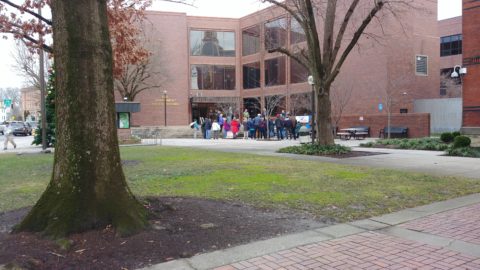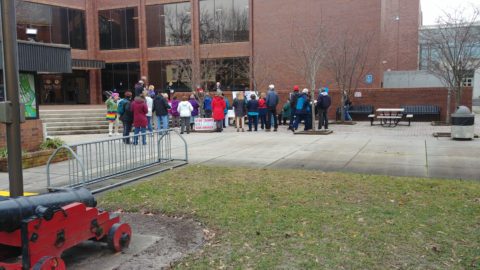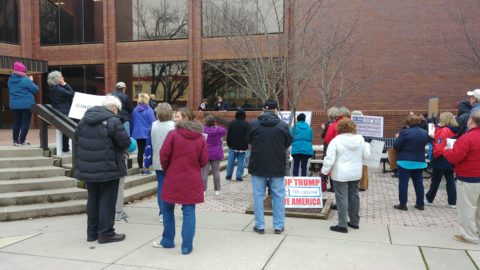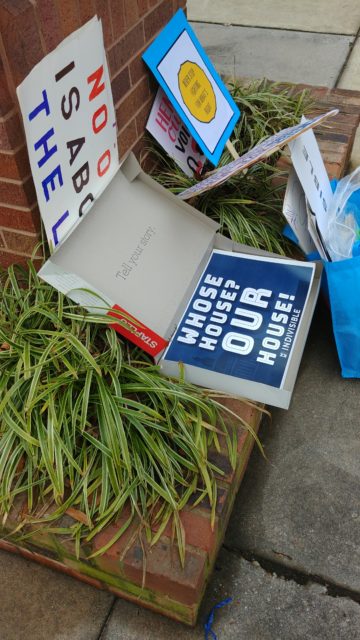With the field now set for the big college basketball dance, it’s time for the annual riffs on that theme – and what better style of madness than to determine seedings for the Democratic presidential field?
I’m going to go from #16 to #1, but feel free to handicap the bracket yourself.
#16: Marianne Williamson, 66. She’s a non-traditional candidate who’s best known as an author and motivational speaker; however, she has one recent (unsuccessful) run for Congress under her belt.
#15: Andrew Yang, 44. The other non-traditional major candidate in the field, he’s an entrepreneur who founded a non-profit called Venture for America. His key issue: a universal basic income for Americans.
#14: Tulsi Gabbard, 37. A member of Congress from Hawaii since 2013, Gabbard also served two tours of duty with the Army National Guard in Iraq, a deployment that cut short her initial political office in Hawaii’s House of Representatives, where she was elected at age 21.
#13: Pete Buttigieg, 37. He was elected mayor of South Bend, Indiana in 2011, and prior to winning a second term in 2015 served for seven months as a Naval reservist in Afghanistan. Shortly after returning from that deployment, Buttigieg announced he was gay. He is the only candidate in the field who still has an exploratory committee.
#12: Julian Castro, 44. Castro was Ben Carson’s predecessor as HUD Secretary, serving from 2014-17 after five years as mayor of San Antonio as well as a city councilman.
#11: Jay Inslee, 68. The governor of Washington state since 2013, he previously served seven non-consecutive terms in Congress – one as a representative of a more rural area and the last six in a Seattle-area district after he moved there. His main issue: climate change.
#10: John Delaney, 55. The founder of a business lending institution, Delaney served three terms in Congress before declining re-election in 2018 to focus on his Presidential run. He was the first candidate in the race, announcing a year and a half before the Iowa caucuses.
#9: John Hickenlooper, 67. He served most of two terms as mayor of Denver before leaving that post as the elected governor of Colorado in 2011. He recently concluded his second and final term in that post.
#8: Kirsten Gillibrand, 52. The most recent candidate to make it official, as she took the exploratory committee training wheels off over the weekend, Kirsten was Hillary Clinton’s replacement in the Senate, moving up from the House barely two years after her arrival there in 2007. She won election in 2010 to finish Clinton’s term and re-election twice since, 2012 and this previous November.
#7: Cory Booker, 49. He’s been New Jersey’s junior Senator since being elected in a 2013 special election, moving up after serving for over seven years as the mayor of Newark. He won that job in his second try, four years after concluding his one term on their city council with a defeat in his initial mayoral bid.
#6: Amy Klobuchar, 58. She has served as a Senator from Minnesota since being elected in 2006; previously she was the county attorney for Hennepin County, which is essentially Minneapolis and its suburbs, for eight years before moving up to the Senate. She announced her bid outside in a Minnesota snowstorm.
#5: Beto O’Rourke, 46. He’s perhaps most famous for a race he lost, falling short of replacing Ted Cruz in the Senate last year. By running for Senate, he abandoned a three-term House incumbency that followed six years on El Paso’s city council as well as a colorful past that included computer hacking and touring the country as bassist in a punk rock band.
#4: Elizabeth Warren, 69. She was elected to the Senate in 2012 after serving as the initial administrator of the Consumer Financial Protection Bureau but being passed over for formal nomination to be the CFPB’s director in favor of Richard Cordray. A longtime law professor, her other claim to fame is being known as “Fauxcahontas” for claiming American Indian ancestry, perhaps even getting professional benefit from that claim. Ironically, she makes no secret about once being a Republican but switching parties in the 1990’s.
#3: Kamala Harris, 54. Stop me if you heard this one before: young black lawyer runs for President based on a few years in state office and barely two years in the Senate. Indeed, this is the case with Harris, who spent seven years as the District Attorney in San Francisco before going statewide in 2010. Six years later, she won her Senate seat and now she’s running for President.
#2: Bernie Sanders, 77. The only current aspirant to have run for President before, if you count several unsuccessful campaigns before he finally won a race (for mayor of Burlington, where he served for eight years) you would find his political career is older than five of his fellow candidates – he first tried for office in a special January, 1972 Senate election to a seat he would eventually win 34 years later, in 2006. That followed a 16-year stint as Vermont’s lone House member. While Sanders has always officially been an “independent,” he’s caucused with the Democrats since joining Congress.
#1: Joe Biden, 76. Yes, I know, he’s not formally in the race. But I’m going to give him the top seed because all these folks to his left, not to mention his association with a still-popular President, make him the most popular candidate – even more so than the ones in the race. The RCP average has Biden up seven points on the rest of the field.
So that’s the way the seeding goes. I see exactly zero chance of a 16 over 1 upset, but that 15 vs. 2 matchup may be more interesting than people think. 3 vs. 14 is pretty much a walkover, as the Gabbard campaign is having several issues, but I wouldn’t sleep on 4 vs. 13 – I think that may be your first upset special.
Oftentimes 12 vs. 5 is a trap game for the higher seed, but I think the more popular Texan takes it. 11 vs. 6 is probably not much of a contest, but 10 vs. 7 may be a close call, too. I think 9 wins over 8 in the mild upset.
Of course, all that does is put the 9 seed out in the second round as the 1 seed advances to the Final Four. The 2 seed will crush the weakened 7 seed in a contest that isn’t as good as the intriguing 2-15 matchup was.
In a thrilling 6 vs. 3 contest, I think the lower seed takes it in a big upset. And it sets up another crazy matchup of 13 vs. 5 that nearly becomes a second huge shock to the system.
Because the 5 seed had so much taken out of him in the prior game, he’s no match for the #1 seed. But the 6 seed moves on, ousting the #2 seed as his game runs out.
So in my final I would have Klobuchar vs. Biden. If Biden ran into foul trouble (i.e. an ill-timed inappropriate remark, which he’s quite prone to do) this could be Klobuchar’s to win. But she has a little baggage of her own, and people are pretty much immune to the things Joe says, so I think he would hang on in a very close contest.
Obviously a lot can change in the coming months, but I think that’s the state of play for the moment.








